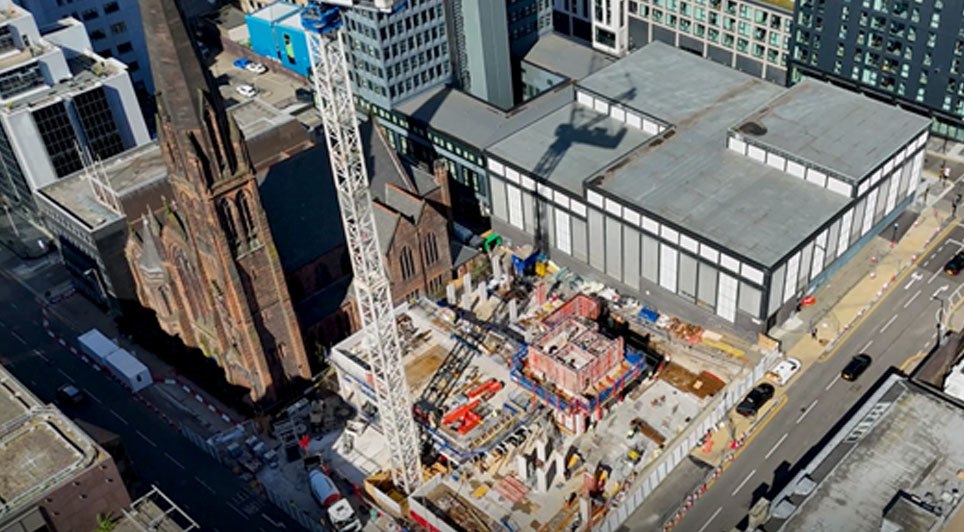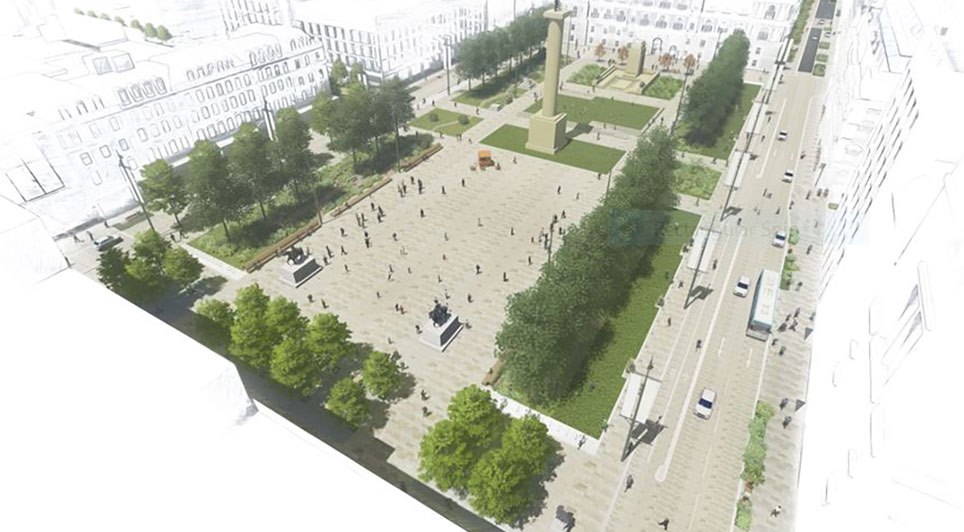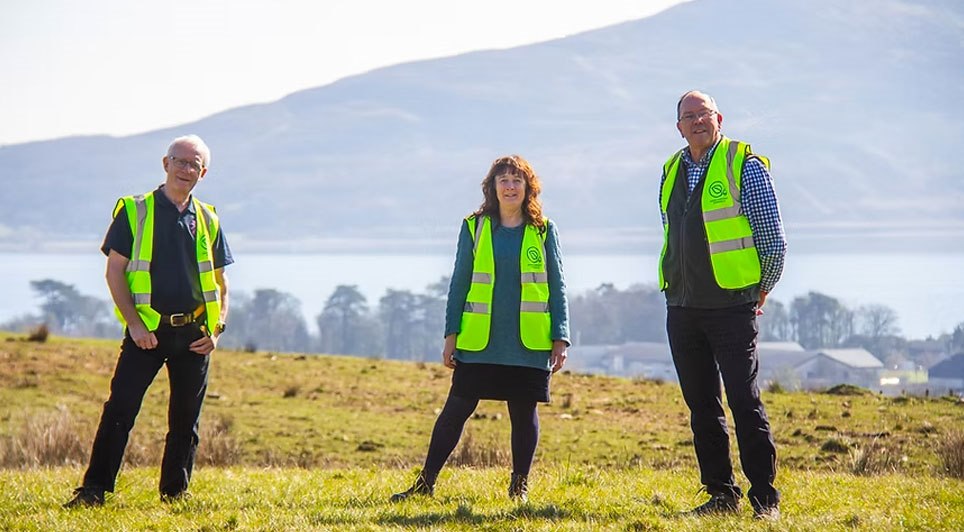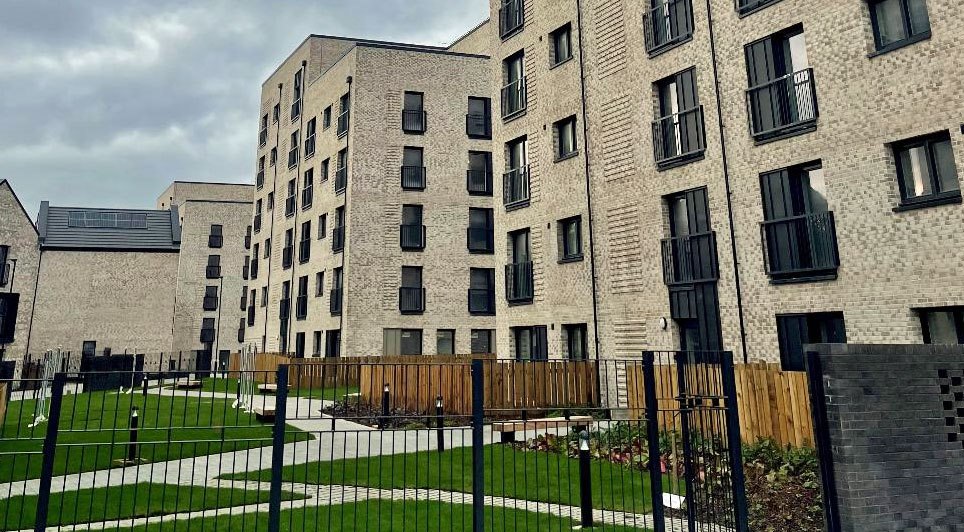Local election candidates are being urged to make investment in building projects a top priority as a new report shows the Scottish construction industry has generated more than £300 in added value to the local economy for every £100 local authorities have invested in capital projects since the last local elections in 2007.
The findings are part of a major new report published by leading trade body the Scottish Building Federation in the run-up to this year’s local government elections on the 3rd May.
The body claims continued local investment in capital projects will deliver excellent value for local taxpayers while supporting employment in Scotland’s critically important construction industry.
Providing local analysis, the new SBF report illustrates how significantly the construction sector has suffered from job losses during the economic downturn. Between 2007 and 2010, employment in the Scottish construction industry dropped by more than 41,000. Over that period, the industry in South Lanarkshire lost more than 6,500 jobs, while construction employment in West Dunbartonshire fell by 47%. Edinburgh has also been particularly hard hit, losing over 5,000 construction jobs – more than a quarter of all those employed in construction in the capital. Meanwhile, Angus and the Scottish Borders have also witnessed major downturns, with employment in the local building industry dropping by 45% and 44% respectively.
In terms of the number of new publicly funded homes built per head of population, the report finds Orkney to be the best performing Scottish local authority, having completed one new home per 105 people living in Orkney between 2006/07 and 2010/11. The Highland Council area and Midlothian and Shetland also score highly, with public funding in the Highlands providing one new home per 114 people and the other two local authorities each recording a ratio of one new home per 118 people over that same period.
Public investment in Aberdeen City, East Dunbartonshire and Falkirk delivered considerably fewer new homes, each recording a ratio of more than 450 people to each new home completed. The Scottish Building Federation is urging local authorities with low rates of public sector new build homes to do more to prioritise public investment in housing. It says the poor performance of Falkirk is particularly concerning given that, based on official housing waiting list figures, it has one of the highest rates of homelessness in the country.
Shetland, Eilean Siar and Clackmannanshire emerge as the most efficient local authorities in terms of processing planning applications, with only around three per cent of applications delayed beyond the normal statutory period for the planning authority to take a decision. Based on figures compiled between 2006/07 and 2010/11, Glasgow, West Lothian and Perth and Kinross emerge as the poorest performing local authorities with the average percentage of decisions delayed beyond the statutory period each year ranging from 12% in the case of Perth and Kinross to 15% in Glasgow.
The report also shows the gross value added (GVA) of the construction industry significantly outstripping the value of local authority capital investment in most local authority areas in Scotland. In Aberdeenshire, for every £100 of public funds invested in capital projects, the industry has delivered almost £730 of gross value added. Rates of construction GVA are also particularly high compared to levels of local public capital spending in Dumfries and Galloway and Dundee, where the industry is delivering close to £500 of added value for every £100 of local authority investment in capital projects.
Inverclyde was the only local authority in Scotland to record a negative ratio of industry gross value added to local public capital spending, with every £100 of public investment seeing only £64 in added value from the construction sector.
Commenting on the report, Scottish Building Federation Chief Executive Michael Levack said: "This report demonstrates the value of prioritising capital spending at a local level in terms of generating wider economic benefits. Across Scotland as a whole, for every £100 of public money invested by local authorities in capital projects, the construction industry is generating more than £300 of added value to the local economy. Provided the money is invested effectively in the right areas, prioritising capital expenditure within local government budgets offers an excellent return on investment."
Commenting on the report’s findings on employment, Mr. Levack added: "As this year’s local election campaign heats up, I hope this new report will enable candidates the length and breadth of the country to see the crucial contribution our industry continues to make as a major employer throughout Scotland. Having witnessed the loss of more than 41,000 jobs between 2007 and 2010, construction continues to employ more than 200,000 people across the country. With the right support, the industry has the potential to employ many thousands more over the coming years."
Commenting on the performance of local authorities on planning decisions, Mr. Levack said: "Delivering an efficient and effective planning system is another prerequisite for the construction industry’s future success. There has been good progress in streamlining the planning process in recent years but this report shows there is still scope for local authorities to improve their performance."
Commenting on the report’s findings on housing, Mr. Levack added: "Used wisely and prioritised into key areas such as affordable housing, local authority capital expenditure can generate significant wider benefits to the local economy. There is a wide variance in the performance of individual councils in delivering the right number of affordable homes to meet current and future demand and there is always scope for every local authority to do more. It is particularly concerning that Falkirk Council has delivered such a low number of publicly funded new homes per head of population when the numbers on its housing waiting list are comparatively so high."
In conclusion, Mr. Levack commented: "Working in partnership with Scotland’s local authorities, the construction industry has a potentially bright future ahead. Local capital investment is a key ingredient to supporting the construction industry whilst ensuring the quickest route to local economic recovery and growth. We call on this year’s local election candidates across all political parties to make a commitment that, if elected, they will work to ensure capital expenditure remains a top local government spending priority over the next five years."
(GK)
Construction News
16/04/2012
Local Candidates Urged To Make Construction Spending An Election Priority

15/04/2025
Construction of a £70 million student accommodation development at 292-298 St Vincent Street in Glasgow has reached a significant milestone, with the building now visibly rising from the ground.
Drone footage has captured the progress of the project, which is a partnership between developer Artisa

15/04/2025
Energy regulator Ofgem is expected to confirm today (April 15) its finalised Connections Reform process, designed to expedite grid connections for renewable energy projects that are ready and crucial for achieving the UK's clean power targets for 2030 and beyond.
The new connections system, anticip

15/04/2025
The ambitious transformation of Glasgow’s landmark George Square has moved into a tangible phase with the commencement of the erection of hoardings around the perimeter of the civic space. Starting today, the hoardings will enclose the Square for the duration of its 18-month redevelopment.
The pane

15/04/2025
Members of the public are invited to attend a consultation feedback event to discuss the proposed infrastructure associated with a new underground electricity transmission cable between the Kinardochy and Errochty substations in Perthshire.
The event will take place on Monday, 28 April, from 4 pm t

15/04/2025
Turner & Townsend have been appointed as project managers to develop a business case for the potential extension of the Borders Railway beyond its current terminus at Tweedbank to Hawick and Carlisle.
This key appointment will enable crucial work to progress on the project, including feasibility s

15/04/2025
Arran Community Renewables, a Community Benefit Society based on the Isle of Arran, has secured planning consent for a 6 MW solar farm. The Glenkiln Solar Farm, located approximately 1km west of Lamlash, is projected to generate 5,600MWh of clean renewable energy annually from 2027.
The £5 million

15/04/2025
A new Route Map has been published by the Scottish Land Commission (SLC) to ensure communities across Scotland secure tangible and long-lasting benefits from nature restoration projects and investment in the country's natural environment.
The practical guide is designed for landowners, developers,

15/04/2025
Award-winning principal contractor Procast Group has further expanded its presence across Scotland with the opening of a new base in Dumfries. The Hamilton-based firm has invested £30,000 in a new warehouse and office facility in the Maxwelltown Industrial Estate in Dumfries and Galloway, marking it

14/04/2025
Glasgow City Council's Affordable Housing Supply Programme (AHSP) facilitated the completion of over 1,000 new affordable homes in the city during the past year, despite facing budgetary reductions at the start of the financial year.
The initial grant of £78.687 million from the Scottish Government

14/04/2025
A key phase of Scottish Water's £11.5 million project to upgrade a strategic rising sewer main connecting Renfrew and Glasgow is set to begin, resulting in a significant road closure.
From Monday, 28 April 2025, Ferry Road in Renfrew will be closed to all vehicular traffic for a period of four mont
 Scotland
Scotland UK
UK Ireland
Ireland London
London











